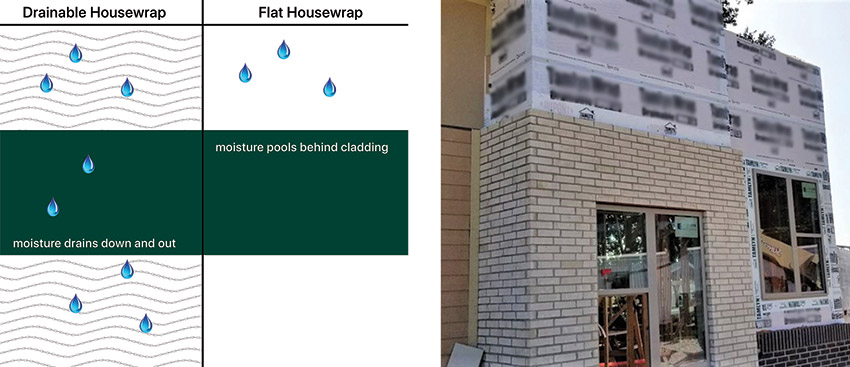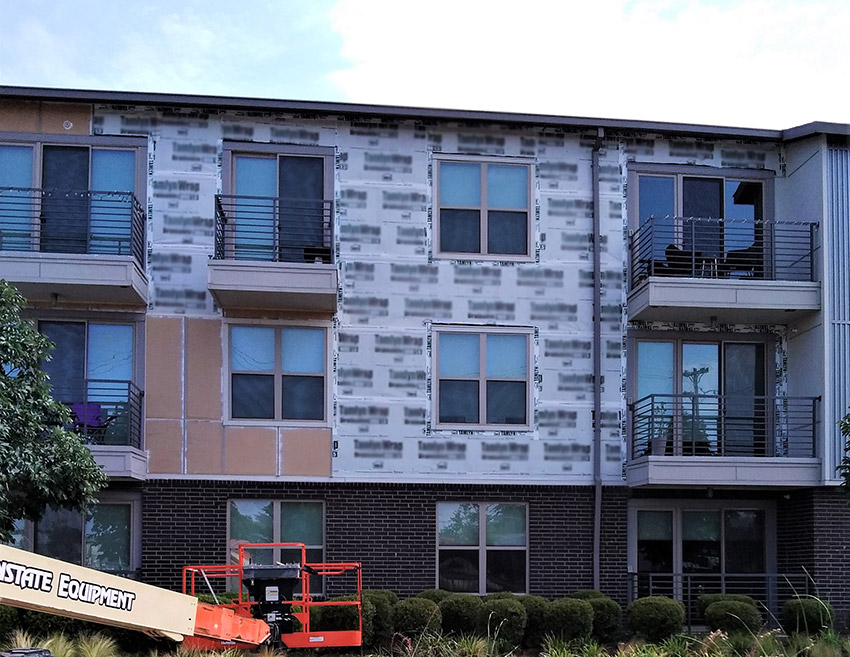Designing Efficient Multifamily Housing
Learning Objectives:
- Investigate some of the energy and environmental efficiencies addressed by the Passive House standard for multifamily buildings.
- Assess air-source heat pumps with VRF technology for providing high-efficiency, all-electric solutions for multifamily housing buildings.
- Explain the significance of designing drainable wall assemblies for efficiently draining and drying those assemblies.
- Determine ways to incorporate high-performance, large-scale sliding or folding glass doors into multifamily buildings to increase light, ventilation, and wellness.
Credits:
This course is approved as a Structured Course
This course can be self-reported to the AANB, as per their CE Guidelines
Approved for structured learning
Approved for Core Learning
This course can be self-reported to the NLAA
Course may qualify for Learning Hours with NWTAA
Course eligible for OAA Learning Hours
This course is approved as a core course
This course can be self-reported for Learning Units to the Architectural Institute of British Columbia
Multifamily housing is often comprised of complex combinations of living units and public spaces that can sometimes seem to defy the nature of true efficiency. Multiple households with varying lifestyles plus common amenity areas with varied occupancy throughout the day all need to be contained within the architectural design and construction of the facility. Add in the desire to provide buildings that are healthy and appealing to live in while also achieving high levels of energy saving performance and it’s easy to see that design professionals face a complicated task. This course looks at several ways to break through and perhaps simplify the design and decision-making process for excellence in multifamily housing. A particular focus is on the ways to create multifamily projects that excel in energy performance using the Passive House standard as a reference (https://multifamily.phius.org/). In recent years, this standard has seen a dramatic growth in use particularly for multifamily housing since it provides a climate specific, density related means to assess and achieve cost-effective energy reductions.
Better Building Facades
Part of the reason for the success of Passive House in the United States, as used in multifamily construction, is the emphasis on fundamental principles associated with both physics and good building practices. That is strongly evidenced in building facades or enclosures where the importance of thermal control is coupled with the significance of air and moisture control. In that light, the use of quality water resistant barriers (WRBs) and rainscreen assemblies is addressed which allows for both resistance to water and the ability for air-induced drying should any moisture be present in the construction assembly. There are, of course, multiple ways to configure exterior walls to achieve water resistance and air drying.
Drainable Building Wrap
One approach that has been in use for more than 10 years is the use of drainable building wraps that enhance the capabilities of WRBs. Specifically, a drainable wrap provides non-compressible elements thermally bonded to a high-quality WRB that provides the necessary water hold-out and air hold-out to create a drainable gap between the WRB and cladding. This type of product pairs very well with fiber cement, which is still a widely used material in the multifamily sector from affordable to market rate.
When properly used and installed, this innovative product effectively removes excess moisture and mitigates the damaging effects it can cause, including mold and rot. The effectiveness of drainable building wrap has been shown to remove on the order of 100 times more bulk water from a wall and can drain it away twice as fast as standard housewraps. This is achieved through the gap created by 1.5-millimeter spacers bonded to a high-performance housewrap. This gap design provides a true drainage space or capillary break between the sheathing and cladding material. It is also available as a vapor permeable product, meaning that it can repel bulk water but allow any moisture that is behind it to migrate out and drain away harmlessly. Overall, this single product provides the drying capability of a 3⁄8-inch rainscreen.

Photos courtesy of Tamlyn
Drainable building wrap provides a barrier between the WRB and the cladding to assist with moisture control and drying. It provides these attributes whether installed behind a single cladding or even multiple cladding materials on the same project.
While this approach offers considerable efficiencies in moisture control and drying, it also helps to streamline construction. The pre-installed raised texture allows the wrap and the drainage to be installed in one step. The most cost-effective products can even be installed in any position: horizontally, vertically, or diagonally.
Beyond the product itself, sealing the edges and seams properly and fully without undue penetrations from staples or nails is critical for good performance and code compliance. Some manufacturers offer full sealing systems that use a compatible adhesive, sealant, or tape. This allows the edges to be held permanently in place, usually by using a hard roller or hand applicator to press the wrap and the tape together. Such products may also use fasteners with plastic heads that minimize the impact of the fastener penetrations and help maintain the barrier continuity.
Equally important are the details of how the drainable building wrap deals with openings in the wall such as doors and windows. Being able to flash and seal the wrap properly with window and door flashing materials will assure that water draining down the face of a drainable WRB will flow away properly and not enter behind other building elements into the wall. It will also maintain the continuity of the air barrier in the overall system.
Since these types of products are commonly used, their installation is well known among the trades, however it is always recommended to follow manufacturer’s instructions and best practice guidelines. (see Best Practice Installation Case Study).

Photo courtesy of Tamlyn
Installation of drainable building wrap should always follow manufacturer’s instructions and general best practices.
Non-Compressible Mat Rainscreen
An enhanced version of drainable building wrap is also available for projects seeking even greater efficiency and performance. This product has non-compressible round posts that are on the order of 6.3 millimeter (1⁄4 inch) or 10.1 millimeter (3⁄8 inch) between two layers to enhance drainage efficiency, drying proficiency, and improve construction expediency. This makeup provides a more substantial air cavity between the cladding and the sheathing material by creating a larger drainage and drying space than drainable wrap products. These non-compressible mat rainscreens help the wall sheathing (i.e., OSB with WRB, coated OSB, etc.) to dry faster and last much longer than usual. The back of any cladding (i.e., stucco, fiber cement board, stone, metal panels, etc.) can also be dried more efficient since the 6.3-millimeter-thick filament is uncompressible and can act essentially as furring strips. This helps reduce the installation time and cost as well as the associated liability of other systems.
Notice

www.crl-arch.com

www.mitsubishicomfort.com

www.tamlyn.com















